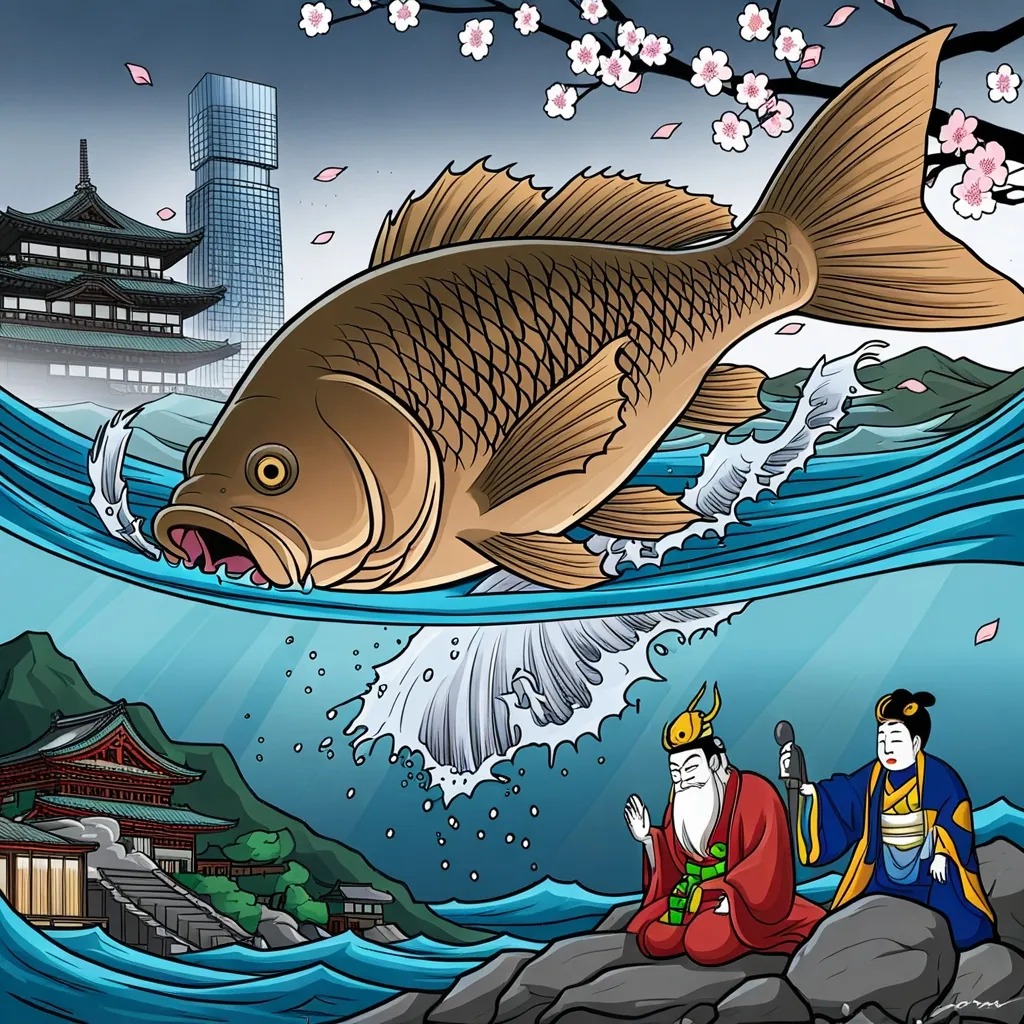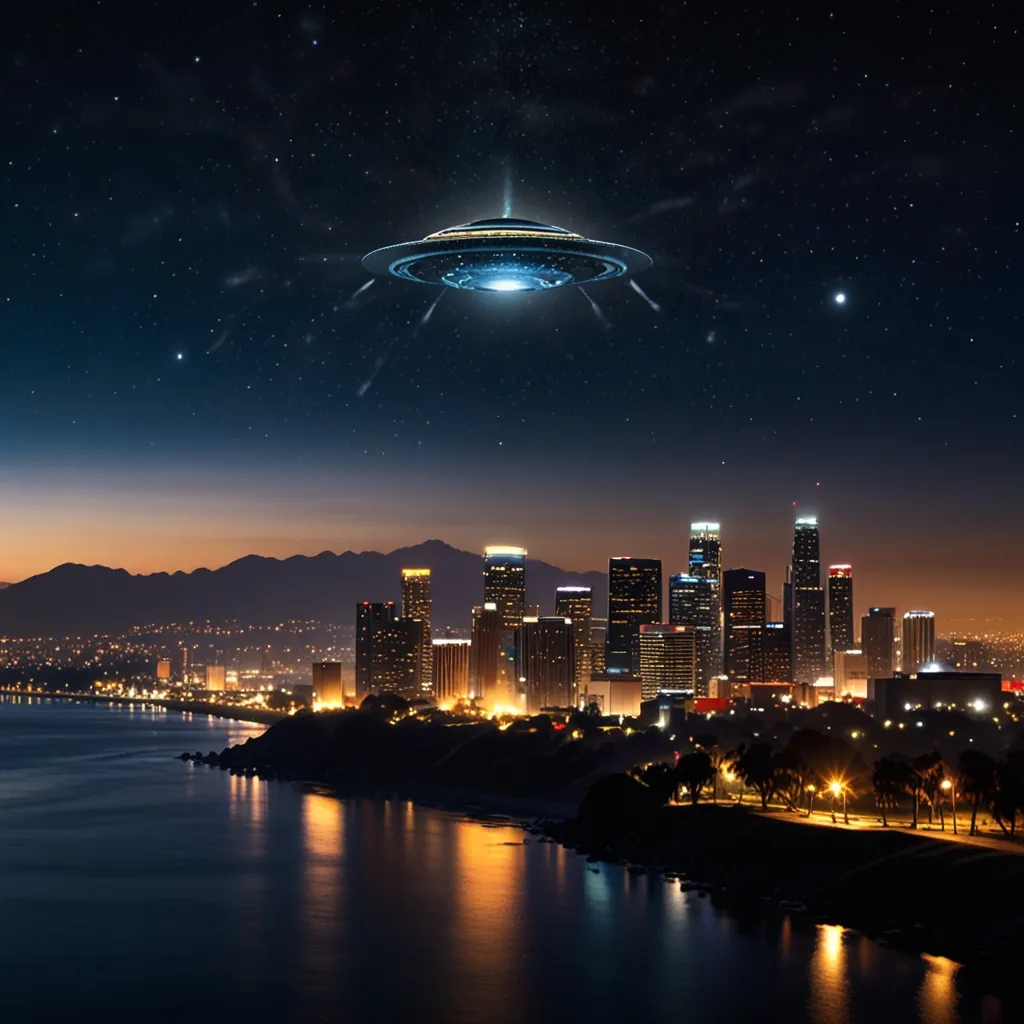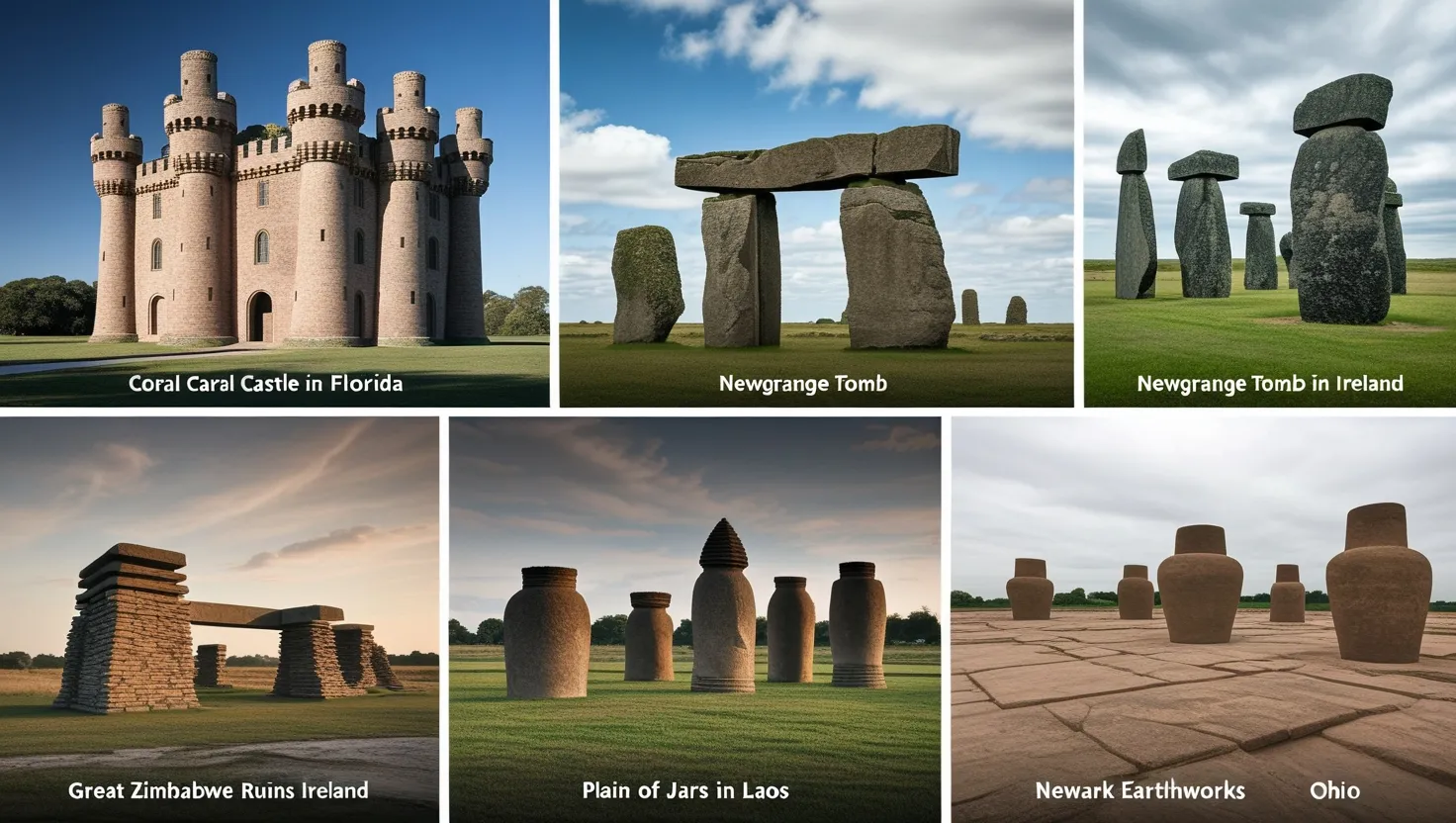Namazu: The Giant Catfish that Shakes Japan
Ever heard of a fish that can cause earthquakes? In Japan, there’s a legendary creature that’s said to do just that. Meet Namazu, the colossal catfish that’s been shaking things up in Japanese folklore for centuries.
Imagine a catfish so big it could swallow Tokyo whole. That’s Namazu for you. This mythical beast isn’t your average pond dweller. It’s believed to live deep under the Japanese islands, and when it gets restless, boy does it make waves - literally!
The story goes that Namazu is usually kept in check by a god named Takemikazuchi. This divine bouncer uses a massive stone called the kaname-ishi to pin down the troublesome fish. But here’s the catch - when Takemikazuchi takes his eyes off the ball (or stone, in this case), Namazu seizes the moment. It thrashes its tail, and boom! Earthquake time.
Now, you might be thinking, “Come on, a fish causing earthquakes? That’s just a tall tale, right?” Well, for many Japanese people over the centuries, it was as real as it gets. This belief really took off after a massive quake hit Edo (that’s old-school Tokyo) in 1855. The disaster was so bad that folks were desperate for an explanation. Enter Namazu, the perfect scapegoat - or should we say scapefish?
But Namazu isn’t just about destruction. Oddly enough, this mythical menace has a bit of a Robin Hood vibe going on. Some stories paint Namazu as a force for economic equality. How? Well, earthquakes meant rebuilding, and rebuilding meant work for the common folk. In a weird twist, disasters became a way to shake up the social order.
This idea spawned a whole genre of art called namazu-e. Picture this: colorful woodblock prints showing Namazu being beaten up by angry gods, or showering coins on happy workers. These weren’t just pretty pictures - they were biting satire, poking fun at the rich and powerful who often skipped town when disaster struck.
Fast forward to today, and Namazu is still making waves in Japanese culture. You’ll spot cartoon catfish on road signs, warning about earthquake evacuation routes. It’s like a friendly reminder from an old troublemaker. And let’s not forget pop culture - Namazu has guest-starred in everything from manga to movies, keeping the legend alive for new generations.
But here’s where it gets really interesting. Some folks think there might be a grain of truth in the Namazu myth. Back in the 1930s, scientists noticed that catfish in aquariums got super agitated before earthquakes hit. They were right about 80% of the time. Coincidence? Maybe. But it’s enough to make you wonder if those old legends were onto something.
Speaking of legends, the whole catfish-earthquake connection goes way back. We’re talking 16th century, around Lake Biwa. People started noticing that catfish acted weird before the ground shook. This observation slowly spread, and by the late 1600s, catfish were the go-to symbol for earthquake prediction.
But it was that big 1855 quake that really put Namazu on the map. Within days of the disaster, namazu-e prints were everywhere. People bought them up like hotcakes, thinking they’d ward off future quakes if you stuck them on your ceiling. Talk about ancient earthquake insurance!
These prints weren’t just about superstition, though. They were a sneaky way for artists to comment on society. Some showed regular folks celebrating with Namazu, hinting at how disasters could level the playing field economically. Others depicted citizens giving local gods a piece of their mind for letting Namazu run amok. It was a way to voice frustrations with the powers that be, all under the guise of mythological art.
Now, let’s chat about why Namazu stuck around in people’s minds for so long. Japan’s no stranger to earthquakes - it’s smack in the middle of several tectonic plates. When you’re living on shaky ground, you need ways to make sense of it all. Namazu provided that explanation, wrapping up the scary unpredictability of nature in a story people could grasp.
But Namazu isn’t just about fear. There’s a weird sort of comfort in the myth too. If earthquakes are caused by a giant fish, then maybe they can be controlled, right? It’s like putting a face on a faceless threat. Plus, the idea that a god is usually keeping Namazu in check? That’s reassuring in its own way.
The Namazu story also shows how resilient and creative people can be in the face of disaster. Instead of just cowering in fear, the Japanese turned their earthquake anxiety into art, humor, and social commentary. It’s a testament to the human spirit - finding ways to laugh and learn even when the ground is shaking beneath your feet.
Let’s not forget how Namazu has evolved over time. In old tales, it was this terrifying monster. But modern depictions often show a more playful side. You might see Namazu as a cute mascot or a comical character in anime. It’s like the Japanese have made friends with their old nemesis, turning fear into familiarity.
This shift says a lot about how society deals with natural disasters. As science has given us better understanding of earthquakes, the need for mythical explanations has lessened. But Namazu hasn’t disappeared - it’s just changed roles. Now it’s more of a cultural icon, a link to the past, and sometimes even a teaching tool.
Think about it - those catfish road signs are a clever way to keep people alert about earthquake safety without scaring them. It’s taking an old legend and giving it a modern, practical twist. That’s the kind of adaptability that keeps folklore alive and relevant.
Namazu’s story also reminds us of the power of storytelling. Myths aren’t just made-up tales - they’re ways for cultures to pass down knowledge, cope with fears, and make sense of the world. The fact that Namazu is still around after centuries shows just how important these stories can be.
So next time you hear about an earthquake in Japan, spare a thought for Namazu. It might not be real, but its impact on Japanese culture definitely is. From ancient wood prints to modern emoji, this giant catfish has left its mark on Japan’s history and imagination.
In the end, Namazu is more than just a myth about a fish that causes earthquakes. It’s a window into Japanese culture, a tool for social commentary, and a way to face the unpredictable forces of nature with a bit of humor and creativity. It’s a reminder that even in the face of disaster, humans will always find ways to explain, cope, and even laugh.
So here’s to Namazu, the earthquake-causing catfish that’s been shaking up Japan for centuries. May it continue to swim through the streams of Japanese culture, reminding us all that sometimes, the most powerful forces in our lives are the stories we tell ourselves.






